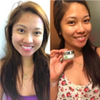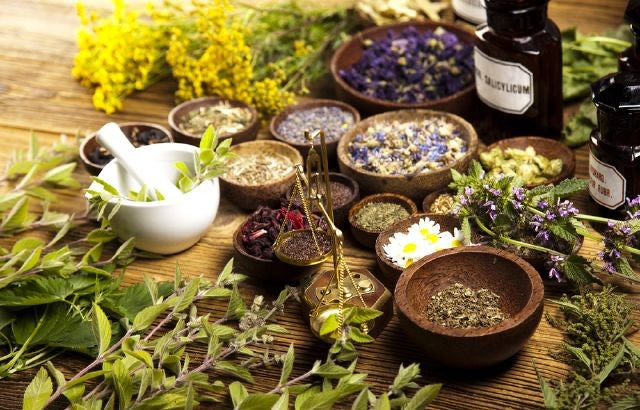Acne is quite a continual skin condition. You might have seen many people having pimples and breakouts on their face. Every person can have this skin condition although the type might be different.

<a href="https://keevaorganics.com/blogs/the-keeva-buzz/how-to-get-rid-of-acne-with-home-remedies" target="_blank" rel="noopener"><img class="aligncenter" src="https://cdn.shopify.com/s/files/1/1096/2552/files/How_To_Get_Rid_of_Acne_With_Home_Remedies.jpg?v=1529509182" alt="How To Get Rid of Acne With Home Remedies? [Infographic] | Keeva Organics" /></a>
Acne can occur on your face, back, chest, neck, upper arms or on shoulders. It is a common problem in the USA and UK. In 2017, it affected more than 40 million people in America.
However, it usually occurs in the period of puberty as the sebaceous glands start activating. The glands produce oil, and they are stimulated by the male hormones generated by the adrenal glands in both girls and boys.
Still, it is not restricted to a particular age. Any person of any age can have any acne. If you have acne, then do not panic as it is not dangerous! It can only leave skin scars which will look awful, but you can get rid of acne and its scars through diverse home remedies.
Real Facts On Acne
There are numerous real and fast facts on acne that one should know. These are explained below:
- Acne is known as skin disease or condition which includes the oil glands at the bottom of the hair follicles.
- It can affect 8 out of 10 people that are aged 11-35 years.
- It is not a life-taking disease but would only leave scars.
- Treatment relies on its severity and persistence.
- The risk factors incorporated are a menstrual cycle, stress, anxiety, humid environment or hot environment.
Causes Of Acne
The skin of the humans have pores that interface with the oil organs beneath the skin. Follicles link up the organs with the pores. Follicles are little sacs that create and discharge fluid. The organs deliver a slick fluid which is known as sebum.
It carries out the dead skin cells from side to side the follicles to the skin surface. The small hairs grow due to the follicle from the skin.
The zits occur when these follicles are obstructed, and oil develops beneath the skin. The skin cells, hair as well as the skin can bunch jointly into a plug. It gets contaminated with microscopic organisms, and swelling comes about. A zit begins to create when the plug starts to separate.
Propionibacterium acnes are bacteria that are present in the skin and add to the disease of zits. The research proposes that the seriousness and recurrence of skin break out rely upon the sprain of microbes. Not all skin inflammation microbes cause zits. One strain assists to keep the skin free from zits and pimples.
Hormonal variables
Scope of variables causes acne, yet the key reason is believed to be an ascent in androgen levels. Androgen is a kind of hormone. The levels of this hormone start rising when the puberty period starts. In ladies, it gets changed over into estrogen.
Rising androgen levels trigger the oil organs under the skin to develop. The extended organ creates more sebum. Intemperate sebum can separate cell dividers in the pores, making microscopic organisms to produce.
Other Causes
There are many other causes of acne. These are mentioned below:
- Some medicines that include the lithium and androgen hormone
- A few greasy cosmetics can also be the reason for acne
- Hormonal changes
- Too Much Emotional Stress
- Menstruation
Types
Acne is of many types. Each type has its particular colour, size, and level of pain. These types are explained below:
- Whiteheads – this type of acne stays on the skin and is quite small in size
- Blackheads – this kind of acne is visible. The shade is black and is present onto the skin surface
- Papules – they are small and are of a pink shade. They are also visible as life on the surface of the skin
- Cysts – this type is also present on the skin surface, so it is also clearly visible. However, it is very painful and filled with pus. This acne can cause scars.
- Pustules – they are red in the shade at their base and pus is present on the top.
Prevention and management tips
There are a few prevention and management tips that you can easily follow. They are as follows:
- You need to wash your face at least thrice a day with warm or cold water. One must not use hot water.
- You must not scrub the skin or burst the zits
- No need to pop up acne
- Do not use too much cosmetics on your face on a daily basis
- Do not touch the face more often
- Do not hold the telephone near to your face while talking
- Wash your hands more often especially before applying makeup, creams, and lotions
- If you wear spectacles, then clean them on a daily basis. Spectacles get skin residue and sebum frequently.
- If the acne is on your back, chest, shoulders or uppers arms, then you need to wear loose clothes. In this way, the skin will be able to breathe.
- Those who have sensitive skin must only use cosmetics that are for sensitive skin.
- Those who have oily skin must only use cosmetics that are for oily skin.
- You have to keep your hair clean as hairs also collect the skin residue. There is no need to use oily hair products.
- You need to avoid extreme sun exposure.
How to get rid of acne with home remedies?
Different home remedies can help you in getting rid of acne. You can use any of the following that suits you. Have a look:
- Using A Tea Tree Oil
Tea tree oil is one of the essential oils. It is not readily available in the general stores but the supermarkets. It is extracted from the Melaleuca alternifolia leaves. It is popular because of its capacity to fight against germs and reducing skin inflammation.
Furthermore, according to diverse studies, if you will apply 5 percent of this oil on your skin, then it can efficiently remove your acne. However, a person needs to apply it on the acne for a couple of days to completely get rid of acne. This oil is also effective for dry skin, burning skin and irritation.
How to Use It:
1) First of all, you have to mix 1 part of tea tree oil into eight parts of water.
2) You need to dip a cotton swab into this mixture and then apply it to your acne.
3) After that, you have to apply moisturizer.
4) Let the mixture of oil and water onto your skin for half an hour.
5) Now wash your face with warm water.
6) Dry your face with a clean towel.
- Apply Green Tea to Your Skin
Green tea is quite good for antioxidants. Those who will drink green tea will stay healthy. According to studies, green tea is of great benefits. It cleans the skin from acne, dark spots and scars. Not just that, it also helps in purifying the skin. The flavonoids and tannins are present in green tea that fights against germs and reduce acne.
How to Use It
1) Firstly, you have to add the green tea in boiling water up to 5 minutes.
2) Allow this tea to cool down
3) You need to use a cotton swab and then add it to the tea.
4) Apply it directly on your acne spots.
5) Let it be on your skin for 30 minutes.
6) Wash your face with warm water and dry it with a clean towel.
- Make Use of Witch Hazel
Do you know that witch hazel is extracted from the bark? Witch Hazel is efficient in curing acne. It includes the tannins which are strong in fighting against the bacteria. Watch Hazel have antibacterial and anti-inflammatory properties.
Due to this reason, it is widely used to treat diverse types of acne. It does not matter if you have acne on your chest, back or face, you can make use of the witch hazel to reduce it. Many studies have shown that it has a good ability to treat acne.
How to Use It
1) The first thing you have to do is to mix one teaspoon of witch hazel bark in one cup of water.
2) Pour this mixture into the saucepan and put it on flame for 30 minutes. Make sure that the mixture reaches its boiling point.
3) Now you have to reduce the mixture to the simmer and then cook it for 10 minutes.
4) You have to remove the mixture from the flame and then let it sit for at least 20 minutes.
5) You need to strain and then store the liquid into a container which you can seal.
6) Use a cotton swab and dip it into the mixture.
7) Apply it to your acne and then wait for 20 minutes.
8) Wash your acne area with warm water and then pat it with a clean towel.
- Moisturize With Aloe Vera
Moisturizing with Aloe Vera is also a nice option indeed. The leaves of Aloe Vera plants produce a gel which is used in diverse cosmetics. It is widely used to treat rashes, skin burns, and other skin problems.
When it is applied to your skin, then the gel can assist in healing the wounds and fighting against skin inflammation. This gel incorporates salicylic acid and sulfur. Both of these are effective in treating your acne.
How to Use It:
1) Firstly, you have to scrape the Aloe Vera gel from the leaves.
2) You have to apply this gel directly onto your acne. Spread the gel properly.
3) You can keep it for as long as it is feasible for you.
4) After that, wash your face with cold water and then dry it with a towel.
5) Repeat this method more frequently.
6) Take a Fish Oil Supplement
Omega-3 unsaturated fats are staggeringly healthy fats that provide a large number of medical advantages. You should get these fats from your eating routine. However, research demonstrates that the vast majority who eat a standard Western eating routine doesn't get enough of them.
Fish oils contain two principal sorts of omega-3 unsaturated fats: eicosapentaenoic acid and docosahexaenoic acid. Eicosapentaenoic acid is helpful for the skin in a few ways, including overseeing oil creation, keeping up sufficient hydration and counteracting skin inflammation.
The increased levels of eicosapentaenoic acid and docosahexaenoic acid have been appeared to lessen inflammatory variables, which may help in reducing acne. According to diverse studies, it has been noted that 50 people with acne were given omega-3 unsaturated fat supplements containing both eicosapentaenoic acid and docosahexaenoic acid on a daily basis.
Just after ten weeks, the acne decreased. There is no particular prescribed day by day intake of omega-3 unsaturated fats. However, most wellbeing associations suggest healthy grown-ups to intake at least 250– 500 mg of Omega-3 every day.
- Follow a Low Glycemic Load Diet
The connection between eating routine and skin inflammation has been discussed for a considerable length of time. The research recommends that dietary elements, for example, insulin and glycemic record, might be related to acne.
Eating high-GI eatables triggers a point in insulin, which is considered to build sebum creation. Along these lines, high-GI eatables are accepted to affect the improvement and seriousness of skin inflammation directly. Food items with a high glycemic list incorporate white bread, sugary sodas, cakes, doughnuts, baked goods, confections, sugary oats and other handled eatables.
According to one particular study, 30 people followed either a low or high-glycemic diet. After ten weeks, the people who have consumed the low-glycemic diet had a prominent improvement in insulin and acne as contrasted to those who have consumed carb-dense foods.
According to another study, 21 individuals have also yielded the same results. These studies recommend that the low-glycemic diet might be useful for people who have acne. On the other hand, further research is still required.








 Verified Purchase
Verified Purchase


